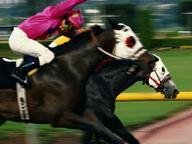Quiz Answer Key and Fun Facts
1. In 1986, Richard Dunwoody won his first of two Grand Nationals. Which horse carried him to victory?
2. Lester Piggott is regarded as one of Britain's best jockeys of the 20th century. How many times did he ride over 200 winners in a single season?
3. Which of the five 'classics' of British horse racing is the last one to be run each year, the 2000 Guineas being the first?
4. In April 2008, the first new British race course for 80 years held its inaugural meeting. What was the name of this new venue?
5. The 1989 St. Leger was run at a different racecourse to its usual home. Where was it moved to?
6. In 1993, the Grand National was declared void. Which horse crossed the finishing line first but was not declared the winner?
7. Of the listed race meetings, which one would you not see Frankie Dettori competing at?
8. The Grand National is famous the world over for being one of the toughest tests a horse and jockey can tackle. Which of the 16 Aintree fences is described as being 5 feet high, 3 feet wide, with a 6 foot ditch on the takeoff side?
9. Which Midlands racecourse holds 30 meetings each year with a mixture of both flat and jumps? It is described as being a right hand course, rectangular for National Hunt racing and oval for flat racing.
10. The English Triple Crown came about from a horse called West Australian, winning three 'Classics' in a season in 1853. Which horse was the last to achieve this feat in the 20th century?
11. In the 1956 Grand National, the Queen Mother's horse, Devon Loch, appeared to jump a fence that wasn't there and ended up on it's belly. Who was the jockey?
12. In which part of the UK are the only two racecourses that are not administered or regulated by either the British Horse Racing Authority or the Jockey Club?
13. Red Rum was only beaten twice in 5 Grand Nationals. Once by L'Escargot and once by which other horse?
14. Which of the listed jockeys is the odd one out?
15. During the reign of which monarch did professional horse racing as we know it today, develop?
Source: Author
romeomikegolf
This quiz was reviewed by FunTrivia editor
Nightmare before going online.
Any errors found in FunTrivia content are routinely corrected through our feedback system.

